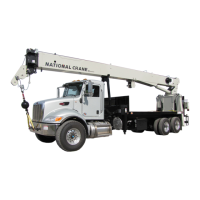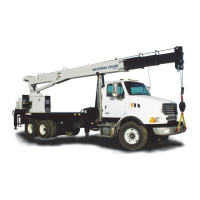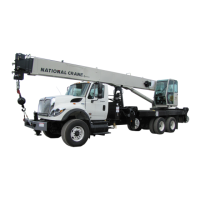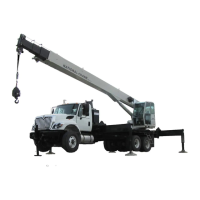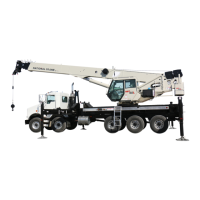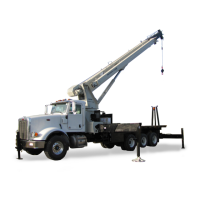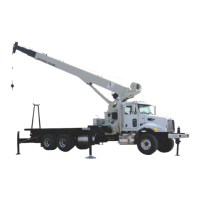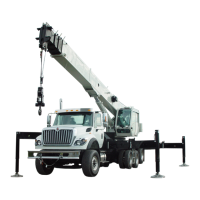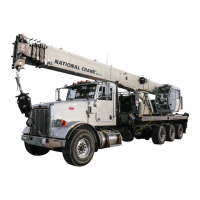National Crane Published 5-27-2018 Control # 039-06 2-13
800D OPERATION
(side) loads, experience of personnel, two machine lifts,
or other hazardous conditions for safe operation.
7. When boom length or radius or both are between points
listed on capacity chart, the smallest load shown at
either the next larger radius or boom length shall be
used.
8. Do not exceed jib capacities at any reduced boom
length. If jib is between angle ratings on capacity chart,
the smallest load shall be used.
9. It is safe to attempt to telescope or retract any load listed
if rating is not exceeded. Capacities at retracted boom
length cannot be telescoped without exceeding ratings.
10. Always pay out loadline before extending boom to avoid
damaging loadline or crane structure.
11. Loads lifted must be within safe hoist capacity as well as
safe crane capacity. Multiple part rope reeving must be
used on loads exceeding hoist single part rated pull. Jibs
are rated for single part use only.
12. Do not operate the boom over personnel or allow them
to walk or stand beneath the boom or load.
13. Do not allow personnel on truck bed or crane frame area
when operating crane.
14. Do not allow personnel to ride on hook, hook block, load
or any device attached to the loadline. Use only National
Crane approved personnel platforms.
15. Operate controls slowly and smoothly to avoid damage
to crane or personnel.
16. Boom must be in carrying rack and outriggers fully
retracted for travel.
17. Do not operate crane within 10 feet (3.05m) of live power
lines.
Definitions
1. Load Radius-Horizontal distance from the centerline of
rotation before loading to the center of the vertical load
line or block with load applied.
2. Loaded Boom Angle-Loaded boom angle is the angle
between the first section boom and the horizontal, after
lifting the rated load at the rated radius. The boom angle
before loading should be greater to account for
deflections. The loaded boom angle combined with the
boom length give only an approximation of the operating
radius.
3. Working Area-Area measured in a circular arc above the
center line of rotation as shown on the Working Area
diagram. If no decal is present the work area is 360°.
4. Freely Suspended Load-Load hanging free with no
direct external force applied except by the loadline.
5. Side Load-Horizontal side force applied to the lifted load
either on the ground or in the air.
6. Boom Length-Length of the boom, from boom pivot pin
to wire rope on last main boom section. A decal on either
side of the boom shows when certain boom lengths are
reached. The letters on the intermediate boom lengths
correspond to the letters on the capacity chart.
7. Range Diagram-Corresponds to the pictorial in the
Capacity Chart. It shows the operating radius and height
of the unloaded boom tip at all boom lengths and angles.
It should be used as a guide to position unloaded
loadline and to determine approximate height to which
the load can be lifted.
The following procedure is a typical method which must be
used to determine the crane’s ability to handle a load. The
crane is equipped with a standard hoist:
1. Determine the weight of the load and load handling
equipment.
2. Determine the radius from center line of crane rotation to
position of load.
3. Determine the radius from centerline of crane rotation to
center of point where load is being moved to.
4. Refer to Capacity Chart for crane and determine that
load and radius of lifting are within capacity of crane.
5. Refer to Capacity Chart for hoist to determine hoist
reeving is proper.
The following examples are for illustrative purposes only.
The examples utilize the capacity chart shown. The load
chart ratings, component weights and dimensional data may
not be the same as the actual unit. Always use actual
information from the crane and job site when planning a lift.
180°180°
FULL CAPACITY
WORK AREA
WORK AREA DIAGRAM
9350
Fo
r
Reference
Only
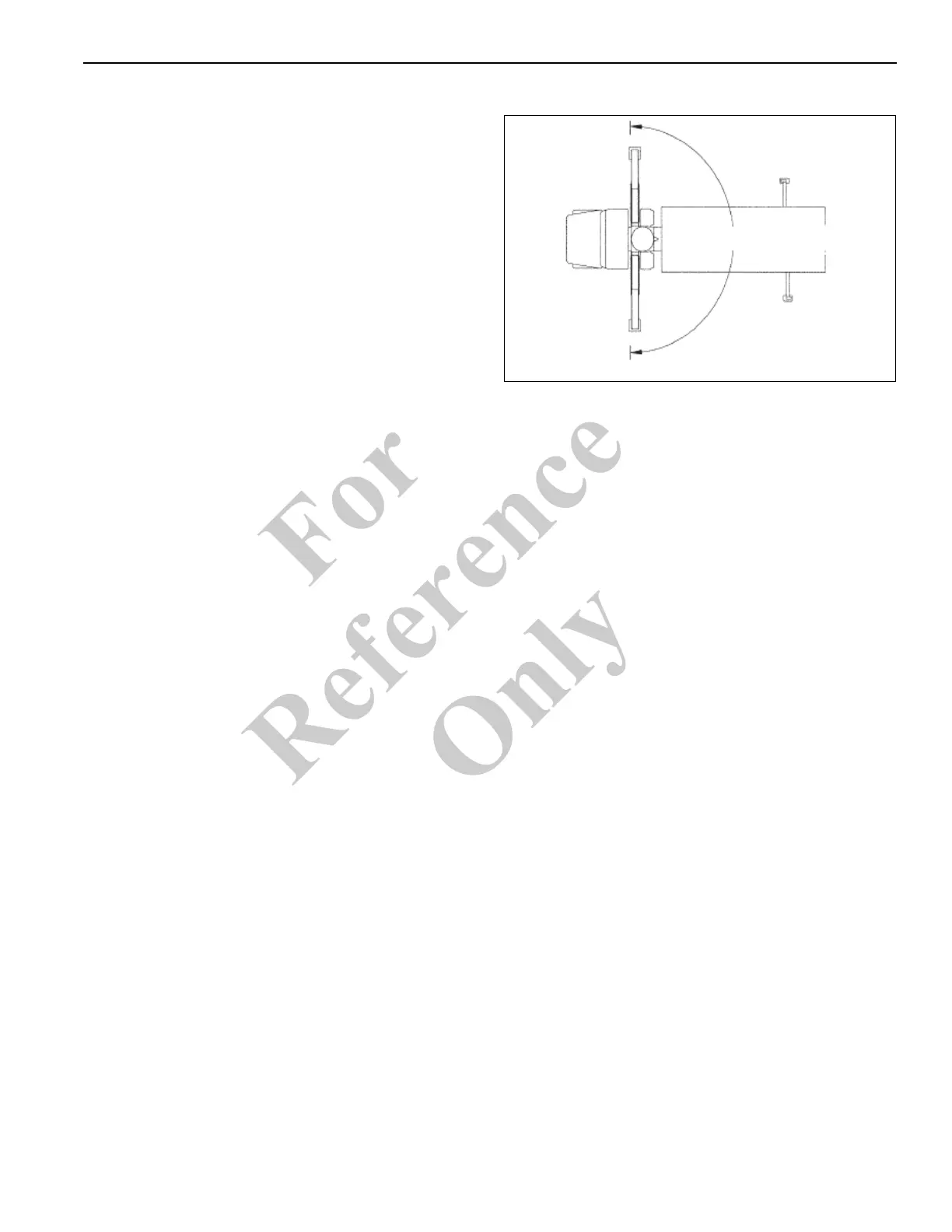